



26. Vehicle/Maintenance
The Durham Light Infantry operated a wide range of vehicles which required a major repair and maintenance provision.
George Iceton recalled there was a Sergeant REME (Royal Electrical and Mechanical Engineers) and a Corporal REME, a
Sergeant fitter DLI, a Corporal and a Lance Corporal, a technical sergeant, technical corporal and about five like myself, well I
think there were three fitters and another two like myself who were handymen as you might say. Probably I did more fitting than
any of them, but I hadn’t passed any army tests. The immediate maintenance of the vehicles, any major operations went back
to LAD (Light A Detachment) which was brigade, that was run by REME. From there it went to a few workshops in Division,
again run by REME. Before that it was all done by the regiments, but with REME coming on the scene they had taken most of
this work over and, in fact we were only supposed to have a corporal, the highest rank you could get in the Durhams was
supposed to be a Corporal.
I presented myself to the MT (Motor Transport) and made myself useful and more or less kept there. I started helping the fitters
whenever I could, but with them realising I had some knowledge of fitting I was getting a lot of the long runs. On two occasions I
went to Denham Studios and at Shepperton for dummies to go in the trenches, to make the trenches look full when there was
only about two men in each trench. I went to Exeter, Dorchester which wasn’t too far away. I was getting trips that weren’t in the
schedule, anything off the cuff sort of thing, those sorts of trips, with any sort of vehicle.
We had some carriers by the time I got back to Litton Cheney, probably ten, could have been more.
Transport wasn’t very bright, Major Jeffreys now had, instead of the Morris PU (Personal Utility), a Hillman Minx with a canvas
back, like a pickup. It suited me great, because now had a car with a heater, I mean Morris heaters were unheard of, which was
really great, and it was much easier to drive. The Morris had a terrible gearbox, you were lucky if you got two clear changes in a
day. But now we had the Hillman, a lovely little job. I knew a little about the Hillman Minx. They had just come on the market
about 1936/37/38. Lovely little job it was. So now he had the Hillman Minx.
We had varied kinds of trucks, a real mix up of vehicles. One I used to cart the dance band around in was a beauty. It was a
Morris full fronted thing with the steering wheel in front of the wheels and the engine sat at the side of you, which was nice and
warm, that was nice to drive. I used to take the dance bands around in that.
Some Austins, they had always been ambulances, two or three, they were quite good trucks, they were made at Longbridge.
The Morris was a Bread van. There were all sorts, everything you could think of. Laundries, two or three market garden trucks
with lattice sides, probably went round the shops selling their goods. Complete mixture. We had one or two army trucks, but not
a lot. The fitters they had an army truck, a three tonner, but there was a real mixture of trucks, and I think probably the carriers.
William Watson recalled there were some armoured 13 cwt tucks, they were quite useless, they got stuck, they were far too
heavy bodied for a vehicle of that capacity. General Martell took them away and tested them for safety and the ordinary rifle fire
created an impression on the armour and the anti-tank rifle, which was a pretty useless weapon went right through. So, they
were considered quite useless and never appeared again. They were so heavy they got stuck in gateways, and stuck in wet
land, they were absolutely useless.
27. The Mill
Walter Masters was the mill owner in 1939. On 22
nd
September he sold by auction his mill horse, harness and waggons, 30
young laying hens, poultry houses and household furniture.
A tragic accident occurred in October 1939 when a child, Victor Baumber, aged twelve, who lived at the Paddocks was crushed
to death in the wheel. An Inquest was held in the village and a verdict of death by misadventure was returned. Evidence of
identification was given by the boy’s father, Charles Baumber of the Paddocks. Walter Masters said that when he left the mill at
3.30 pm on Friday the hatch had been lifted to free the mill wheel of any water. Normally there would not be any water left in the
buckets of the wheel, and it would take a great deal of weight to turn the wheel round. There was a guard rail by the wheel and
children had no right to go anywhere on the premises.
William Honeybun, aged 11, said he and Baumber went fishing in the stream above the mill wheel. Baumber suggested going
inside the mill wheel just to say he had been there.
Mrs Winifred Legg of the Bungalow said she saw the two boys playing near the mill wheel and later heard a shout. She thought
it was from some soldier who had been billeted at the mill and who, during the afternoon, had been starting the wheel. Stanley
Legg described how after the accident with P.C. Trevett he cut through the iron spoke of the wheel to release the boy.
Returning a verdict in accordance with the medical evidence the coroner said he had no doubt that the wheel had been left in a
safe position by Mr Masters, but it had been turned by other persons. He expressed his sympathy with the relatives.
Walter Masters retired this year and sold the mill to Amelie Munns.
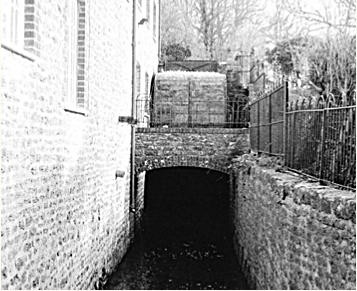
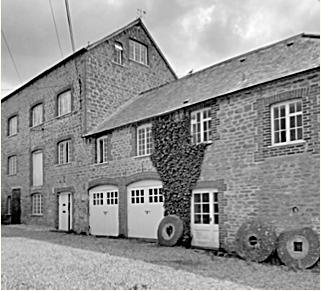
The Mill Wheel
The Mill
28. The Garage
In
1939
Stanley
Legg,
described
as
a
carpenter
and
agricultural
engineer
was
running
the
Garage.
He
lived
with
his
wife
Winifred and children Norman (11), Edna (7) and Ronald (5) in the bungalow next to the garage.
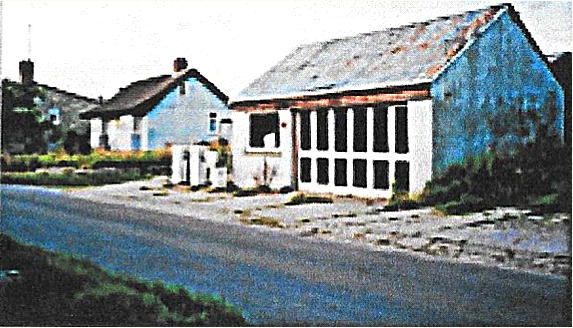
29. C.G.Fry
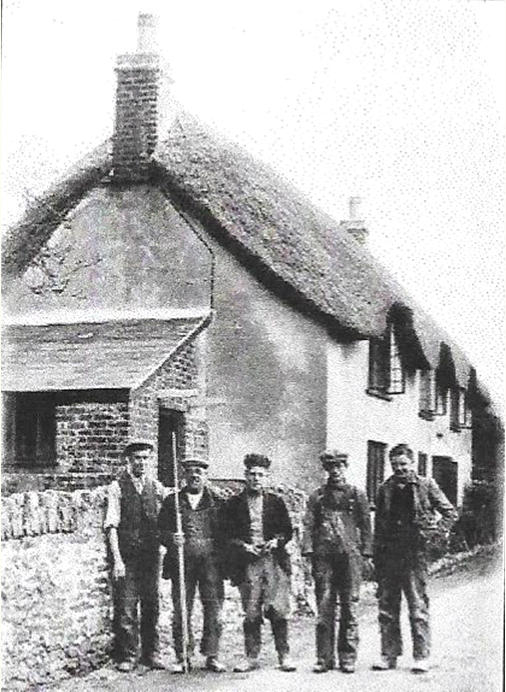
Charlie Fry, Edwin Pye, Reg Legge, Robbie Northover and Leslie Thor by Redway Cottage.
Before the Second World War there were five employees, with some of them being called up for war service. Leslie Thorner
was a trooper in the 148
th
Regiment, Royal armoured Corps. He was killed in action on 11
th
July 1944.
30 Whitethorn Cottage

In 1939 Joseph Willcox was a baker and carrier, living with his wife Edith, daughter Grace, a motor driver, son Ron, assisting
his father and daughter Veronica, aged 2.
From 1939 extra journeys were run at 8.30 from Litton, 4pm from Dorchester to cater for pupils at schools in the town. A return
fare of two shillings was charged and at about this time a dark blue Ford 10-seater bus was in use.
Joseph Willcox’s son Bill at Whitethorne Cottage
.
31 Thorners School
In 1939 John and Mary Gray were here with their daughter Mary, aged 17. He was the Schoolmaster and an ARP Warden. In
August 1943 there was a presentation to Mr Gray and his wife, who after 14 years at Litton Cheney were leaving for Stalbridge.
Canon Daniell, in making the presentation, stressed the representative nature of the tribute, coming as it did from over a
hundred people from Litton Cheney, Swyre, Puncknowle, Longbredy and Littlebredy. In acknowledgement Mr Gray spoke of his
work in the district and of the community spirit which had meant so much to him. The proceedings ended with a vote of thanks
to all concerned, proposed by the Rural Dean, Canon Trotman
Mr Birchall became the new headteacher in September 1943.
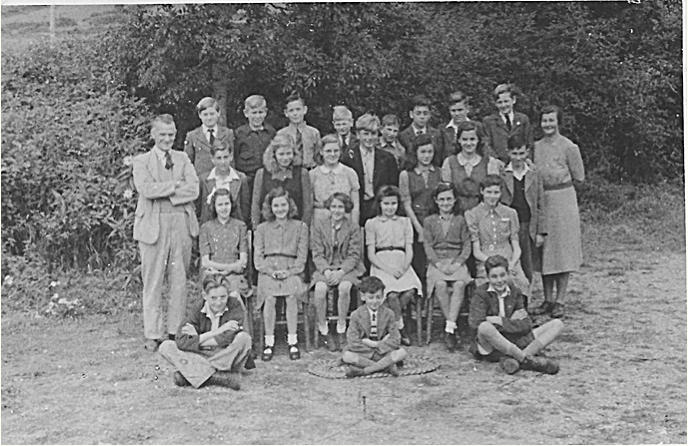
Thorner’s School group with headteacher John Gray in 1943
The school was sometimes used for village events when the Sunday School building was in use for war time purposes.
The village New Year’s party was held at the school on 2
nd
January 1940. Admission to tea was 1s 6d, afterwards 1s, children
to tea 1s. The profits were given to the Bells and Electric Light Fund.
The New Year party was held at the school on 3
rd
January 1941. Games were held from 7-8.30 pm and dancing 8.30-10.30
with buffet refreshments. Admission was 9d and children 6d.
32 Army Camp

1947 aerial photograph of the Army Camp site
The nucleus of the troops’ billets during the Second World War was twenty-eight Nissen huts in two fields east of the school to
accommodate American troops before D-Day.
Olivia Birchall, the daughter of the school headmaster recalled it was quite an event for the quiet village especially for us living
next door, with no other dwellings in the lane. The first consignment of soldiers quickly made themselves known to the family,
popping round casually for a friendly chat. One or two from the cookhouse would appear from time to time bearing freshly
cooked ring-doughnuts which Olivia and her sister ate with gusto. Although a smallish affair, the camp had its own movie
theatre and the villagers were given free access to films, bringing the likes of Bing Crosby and Frank Sinatra to rural Dorset.
Although they were there for only a comparatively short time, Olivia remembered units changing several times, as each group
departed for Europe in turn. At some stage one of the units included a band or orchestra and several of the wives of these men
stayed two or three nights with us in the schoolhouse just before their husbands went overseas. Unfortunately, they were later
informed that the vessel carrying this group had been sunk.
The camp was demolished except for two huts which had been the sergeant’s mess. These were to serve the school as a
kitchen and dining room until 1968.
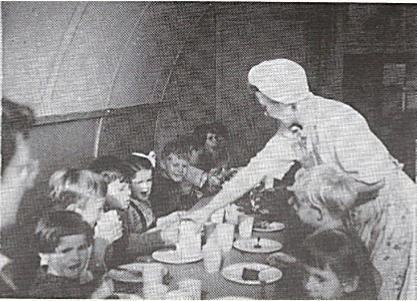
Army Nissan Hut in use as a School Canteen
33 D-Day
D-Day, also known as the Normandy Landings, occurred on 6
th
June 1944 and was a pivotal moment in WW2. It involved the
largest sea borne invasion in history, where Allied forces, including troops from the United States, Canada and the United
Kingdom, landed on five beachheads in Normandy. It was part of Operation Overlord, aimed at liberating Western Europe from
Nazi occupation. The success of D-Day marked a significant turning point in the war, leading to the eventual defeat of Nazi
Germany.
Belinda Brocklehurst recalls towards the end of 1943 and into ’44 we noticed an exciting new phenomenon. All along the
Dorchester Road and hidden under camouflage was a single line of tanks, Bren gun carriers, ducks (Landing craft) and jeeps.
There were miles of them; all being collected for the invasion of France, when the great moment came. There was added
optimism and a feeling that the war was going the right way. News in Africa was getting better, and in Italy. As we had relations
in both, I was very aware of what was going on too. Uncle Alec, my mother’s eldest brother was with the Chindits in Burma;
Uncle Ian, her youngest brother, in Italy; her cousins Henry, Napier and Spencer Crookenden all in Africa and Italy, and later
Napier landed in a glider at Pegasus Bridge on D-Day. Much later he became head of the Parachute Brigade. Henry was a
lovely man and sadly had both legs blown off by a mine in Africa. Spencer was also badly wounded there and lost a leg. Napier
used to say, ‘we are three brothers, we have three legs between us, and I have two of them!’ Alec was wounded in Burma and
came back for a bit, a very tense and silent man. He gradually unwound as he rode about the countryside on a fine horse
borrowed from Honor Williams of Bridehead. Ian picked up a blood disease in Italy and was invalided out of the army.
A children’s party was planned for one evening, and the night before there was a rumbling of traffic driving through the village
and in the morning all the soldiers had left the village. There were no bugles blowing in the morning ‘Come to the Cookhouse
Door Boys’, to summon the soldiers to breakfast. There was total silence. No lorries, no soldiers, no noise.
We later heard they had all gone to Weymouth to join the invasion fleet and were among the first to land at Omaha on 6
th
June.
Sadly, most of the regiment which had been stationed in Litton at that time, were badly hit, and many were killed and wounded,
including our dear orderly George who was left unable to walk for the rest of his life. Needless to say, there was no party for us
that night.
When the invasion was taking place, D-Day, I remember my grandfather waking me early in the morning and telling me to lie
on the lawn in the garden and put my ear to the ground, and I heard and felt the vibration of a dim booming from the guns out to
sea. He said the ships shelling the Germans on the cliffs of Normandy. Clouds of airplanes towing gliders flew directly over us
on their way to France followed by a sky full of planes taking paratroopers and supplies. It was incredibly exciting and rather
terrifying.
The nucleus of the troops’ billets during the Second World War was twenty-eight Nissen huts in two fields east of the school to
accommodate American troops before D-Day.
Olivia Birchall, the daughter of the school headmaster recalled it was quite an event for the quiet village especially for us living
next door, with no other dwellings in the lane. The first consignment of soldiers quickly made themselves known to the family,
popping round casually for a friendly chat. One or two from the cookhouse would appear from time to time bearing freshly
cooked ring-doughnuts which Olivia and her sister ate with gusto. Although a smallish affair, the camp had its own movie
theatre and the villagers were given free access to films, bringing the likes of Bing Crosby and Frank Sinatra to rural Dorset.
Although they were there for only a comparatively short time, Olivia remembered units changing several times, as each group
departed for Europe in turn. At some stage one of the units included a band or orchestra and several of the wives of these men
stayed two or three nights with us in the schoolhouse just before their husbands went overseas. Unfortunately, they were later
informed that the vessel carrying this group had been sunk.
34 Court Farm
Court Farm was a dairy farm of 87 acres of meadow, pasture and arable land with a stone-built and slated farmhouse, dairy
house (used as a store), cowstall and buildings. It was owned by Bill Wakely and run by his sons Walter and William. Walter
lived at Court Farmhouse with his wife May and William lived at 2, Sunnyside Cottages with his wife Lilian. In 1944 the brothers
were noted for increasing milk production by over 20% as part of the Victory Churn Contest.
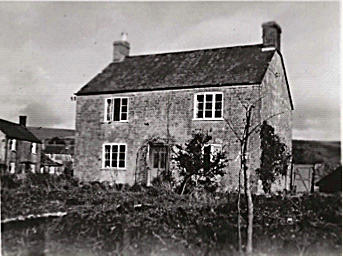

Court Farmhouse
Farm Buildings
The Cheese House was originally Court Farm’s dairy building and much Dorset Blue cheese was made and stored here. The
gable of the old dairy faces the road. It was requisitioned by the army for use as a store in the Second World War, with much
graffiti left on the walls. It continued to be used as a store after the war and was converted into a house in 1974.
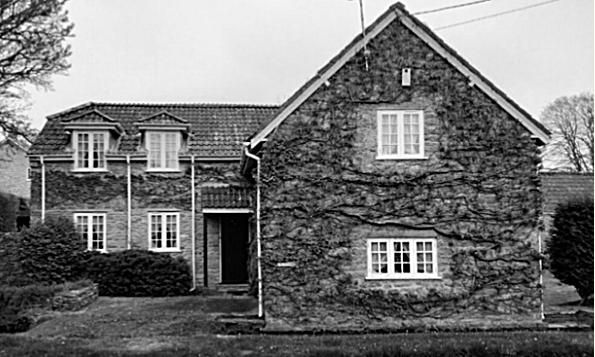
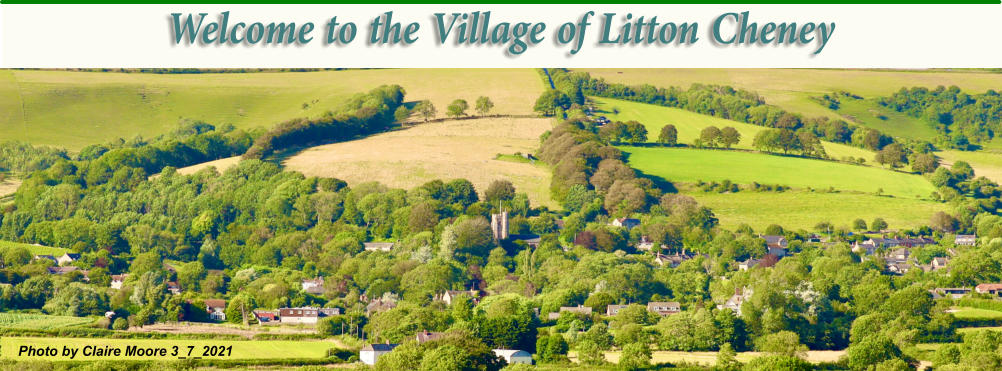






ABOUT LITTON CHENEY

LITTON CHENEY IN WARTIME





























